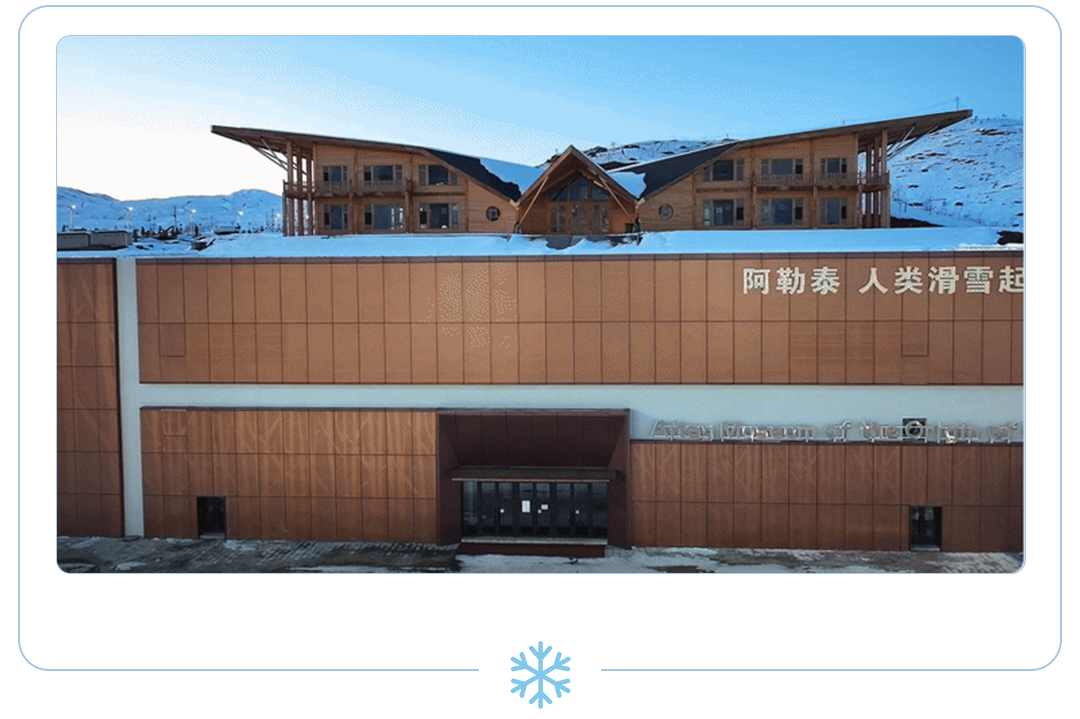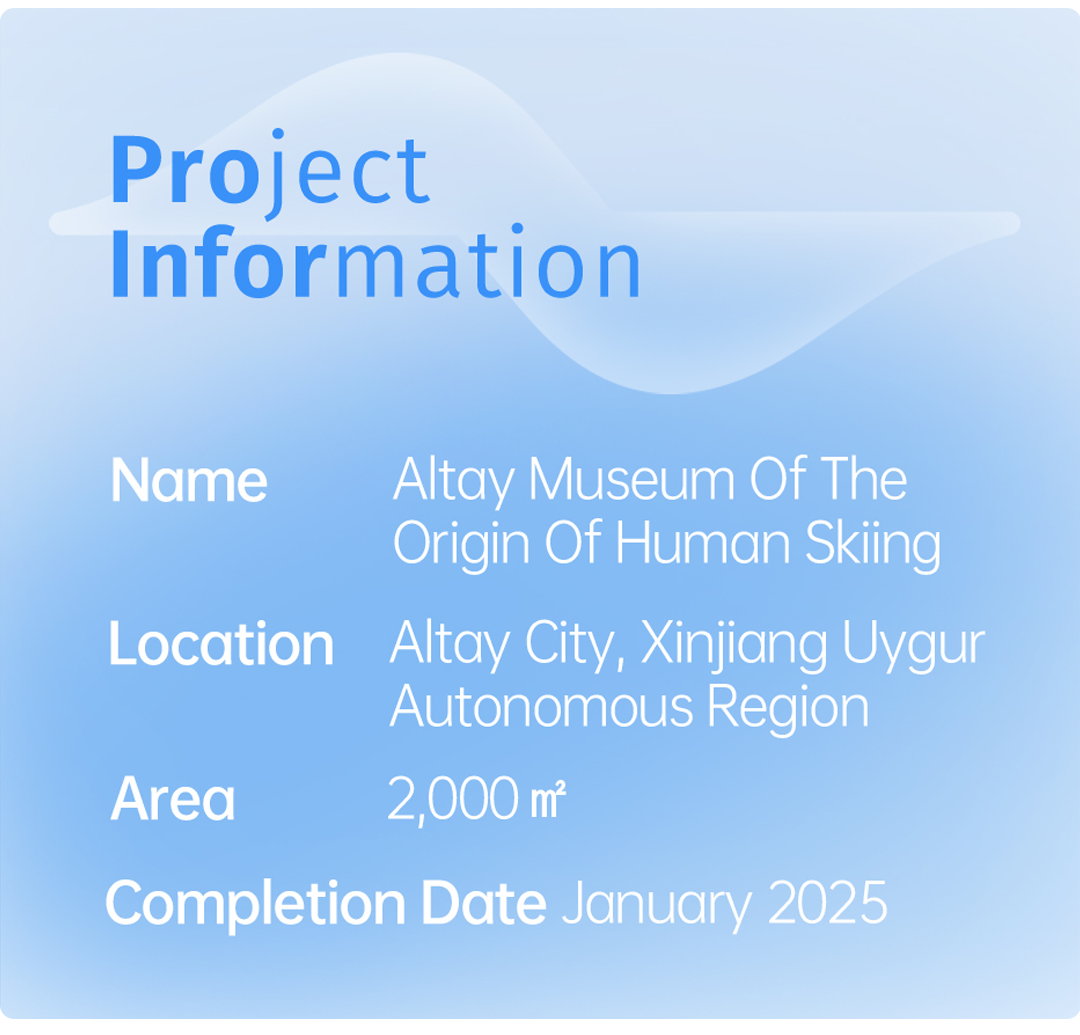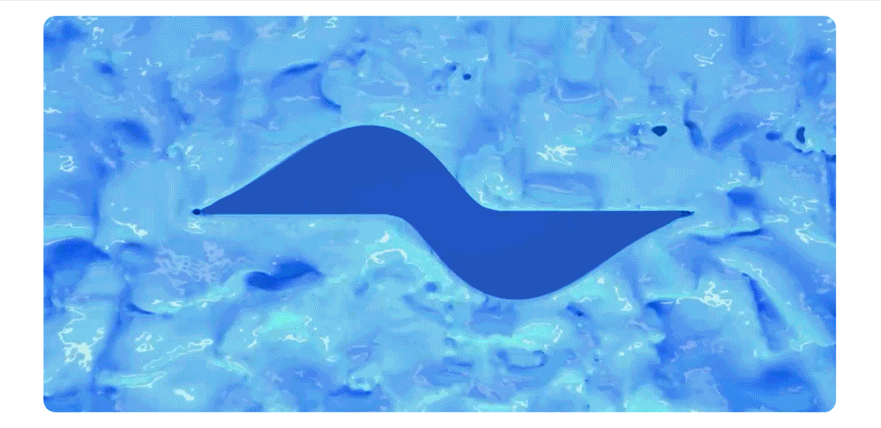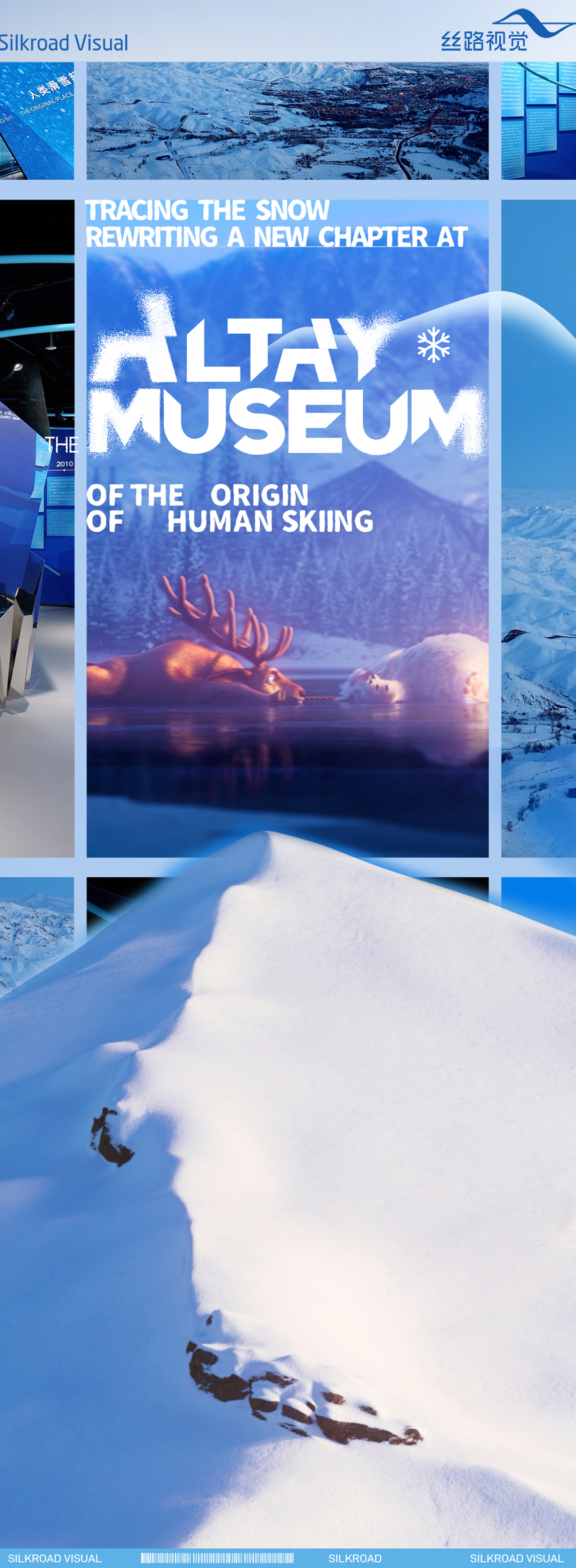
Nestled amidst the snow-capped mountains of the Altay General Mountain International Ski Resort, the Altay Museum Of The Origin Of Human Skiing uses snow and ice as narrative carriers, creating a dialogue space across ten thousand years of civilization.

This cultural landmark, designed and constructed by Silkroad Visual, covers an exhibition area of 2,000 square meters. It presents the origins of skiing civilization, scholarly processes, and contemporary developments through a three-tiered exhibition hall.
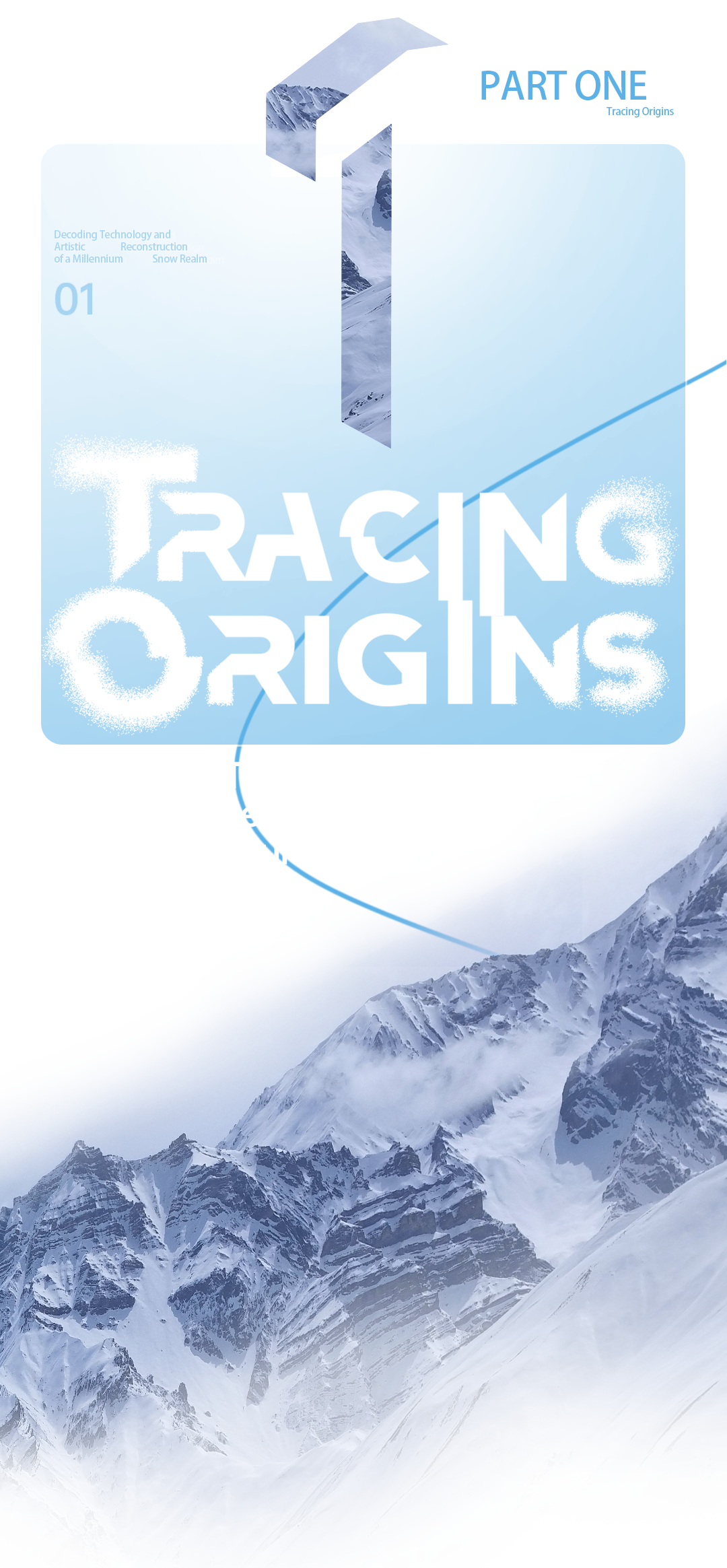
Decoding Technology and
Artistic Reconstruction
of a Millennium Snow Realm
As China's first specialized museum themed around the origins of human skiing, the interior architecture employs ice and snow elements as core storytelling language: the entrance hall features a dome structure resembling snowflake crystallization, while the abstract ski trail installation running through the entire museum uses flowing forms to both topologically interpret the trajectory of skiing and create a cognitive space of folded time and space, connecting the long history of skiing.
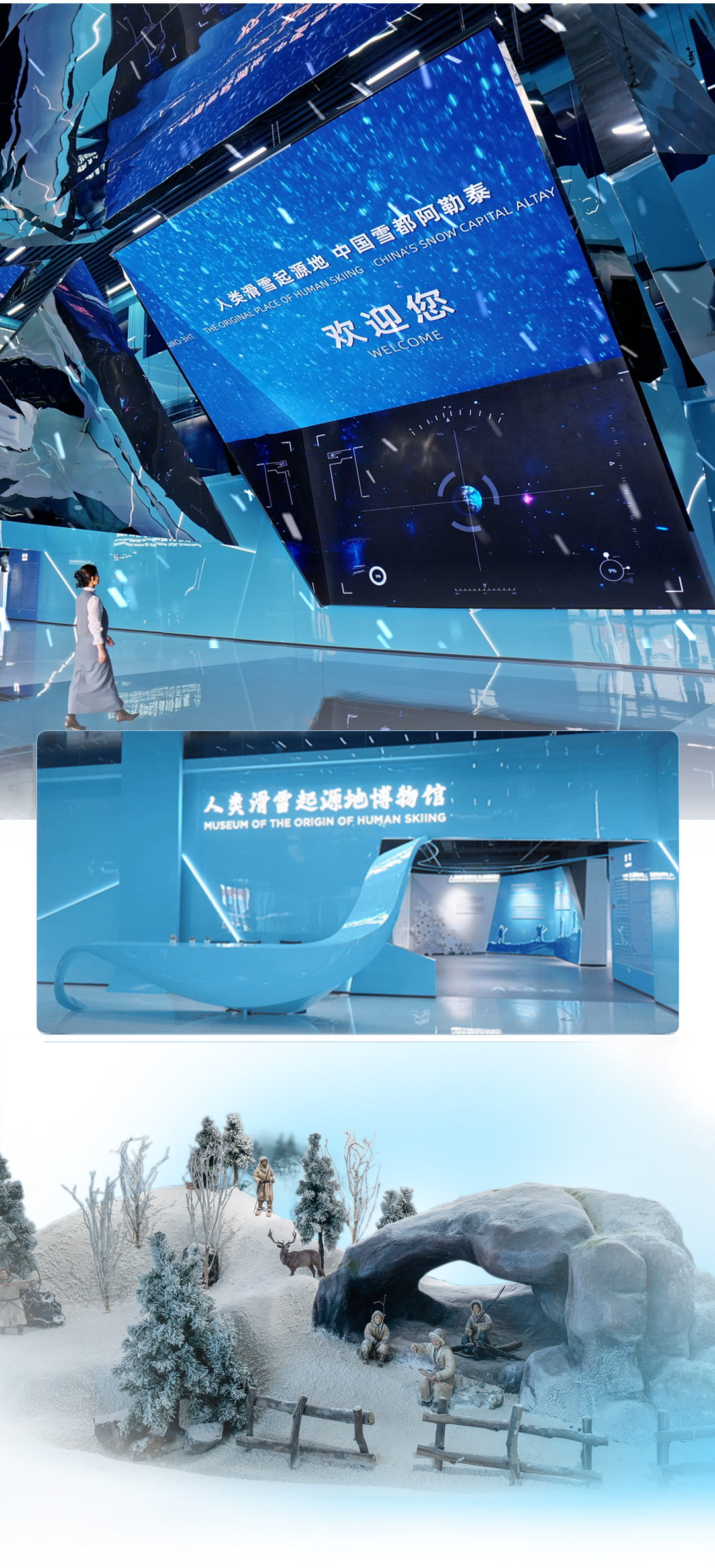
On the first floor, the museum combines physical exhibits and technology to demonstrate the origins of skiing. A snow-fall device driven by air pumps recreates Altay’s winter environment with feather-like "snowflakes." Mechanical devices generate snowfall scenes, allowing visitors to deepen their understanding of Altay's superior snow resources in a romantic atmosphere.

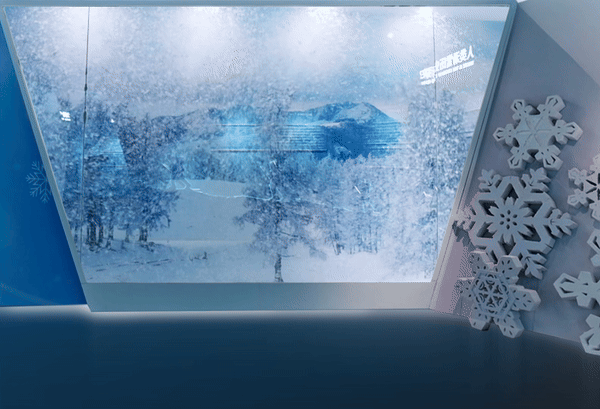
The core proof of Altay as the origin place of human skiing is illustrated through the Dunde Bulao rock shelter paintings.Using a 1:1 replica of the cave space combined with laser spotlight interaction systems, the museum simulates the exploration and discovery process of the Dunde Bulao ski hunting rock art through an artistic-technological fusion approach.
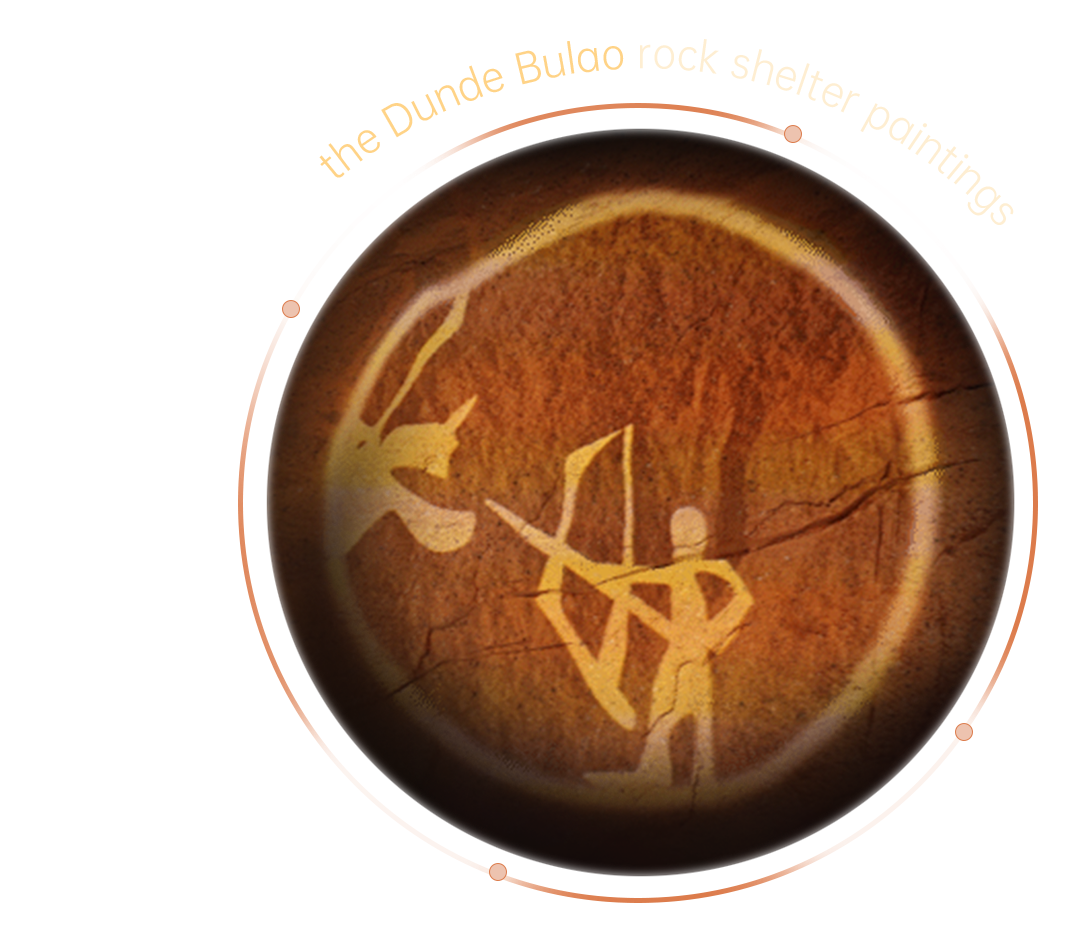
When visitors activate the laser spotlight to illuminate sections of the rock wall, stories related to "Colorful Ski Hunting Paintings in Dunde Bulao Shelter" and "Petroglyphs of Buerjin County" appear on the wall. Simultaneously, views of winter scenery along the Altay Mountains and the Irtysh River are projected on the ceiling, with soaring eagles and drifting snowflakes, accompanied by ancient folk melodies.
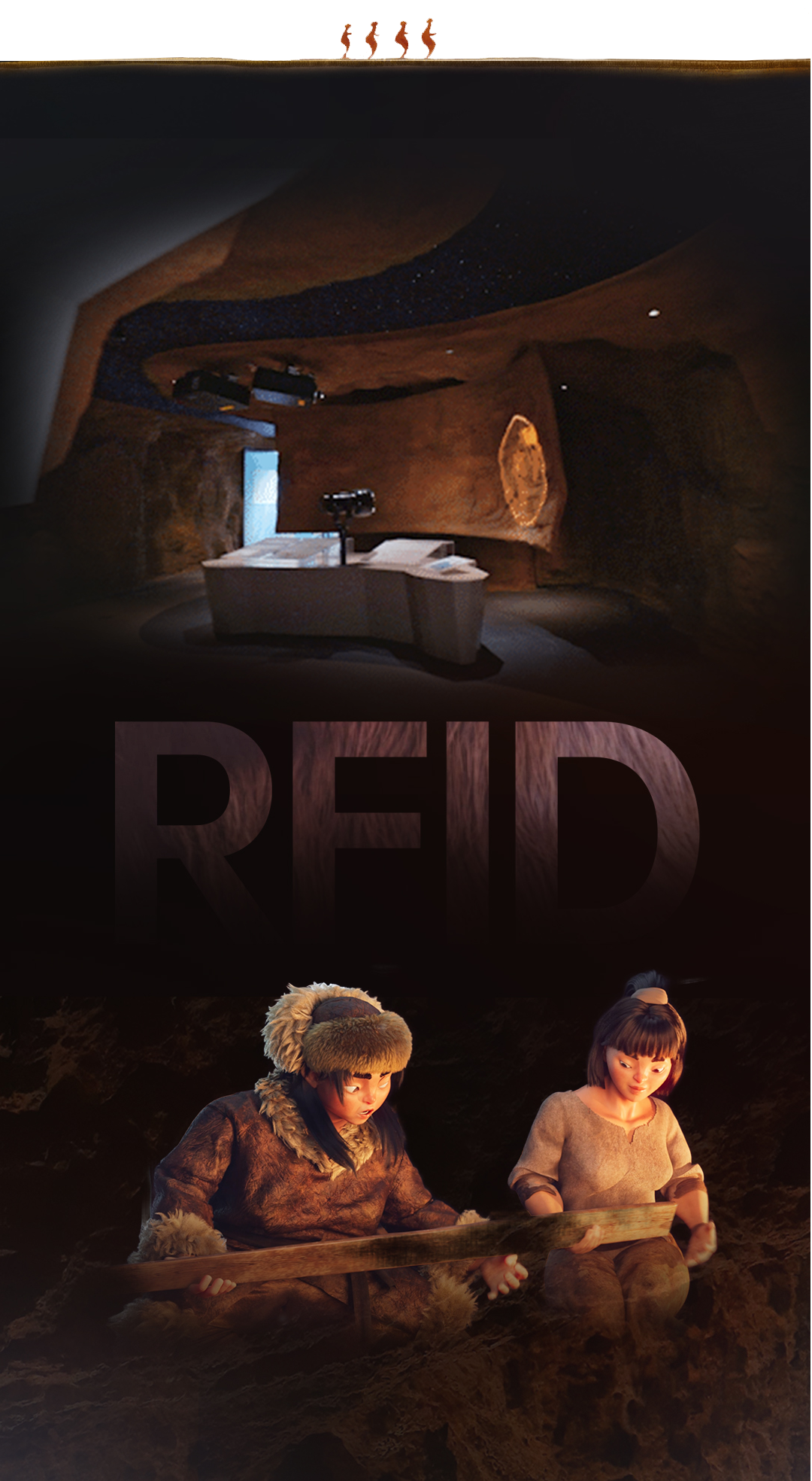
An exhibit on fur ski production equipped with RFID sensors allows visitors to understand the materials, shaping, skinning, and fixing processes through modular interactive devices. LED screens display videos of each production stage, helping visitors gain an in-depth understanding and virtually experience the entire process.

From Academic Research
to a Century of Snow and Ice
Industry Development
The second floor centers on the release of the "Altay Declaration," with holographic projections recreating the historical scene of China’s first national ski champion, Mr. Shan Zhaojian, reading the declaration. The exhibition wall displays nearly 30 years of research progress along a timeline, including field photos, conference documents, and multilingual versions of the declaration.
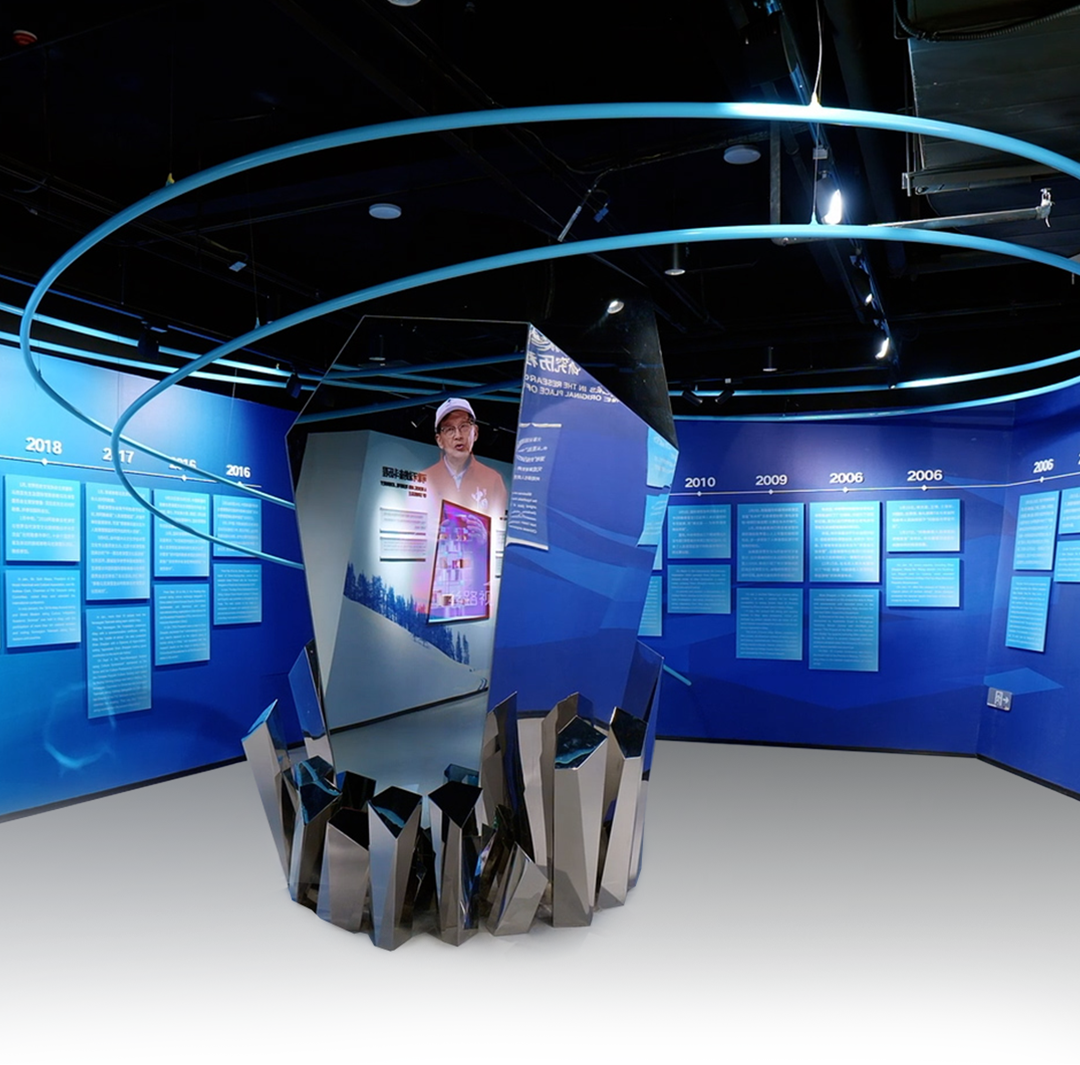
Mr. Shan Zhaojian, as a recorder and storyteller, introduces the research journey and story confirming Altay as the birthplace of human skiing.
The development plan for Altay’s snow and ice industry is vividly presented through a physical model sand table combined with projection and 3D mapping technology. It systematically showcases strategic planning, development positioning, overall urban construction plans, and overarching city development goals—demonstrating Altay’s determination to inherit millennia-old snow and ice civilization and promote the transformation of snow culture into new productive forces.
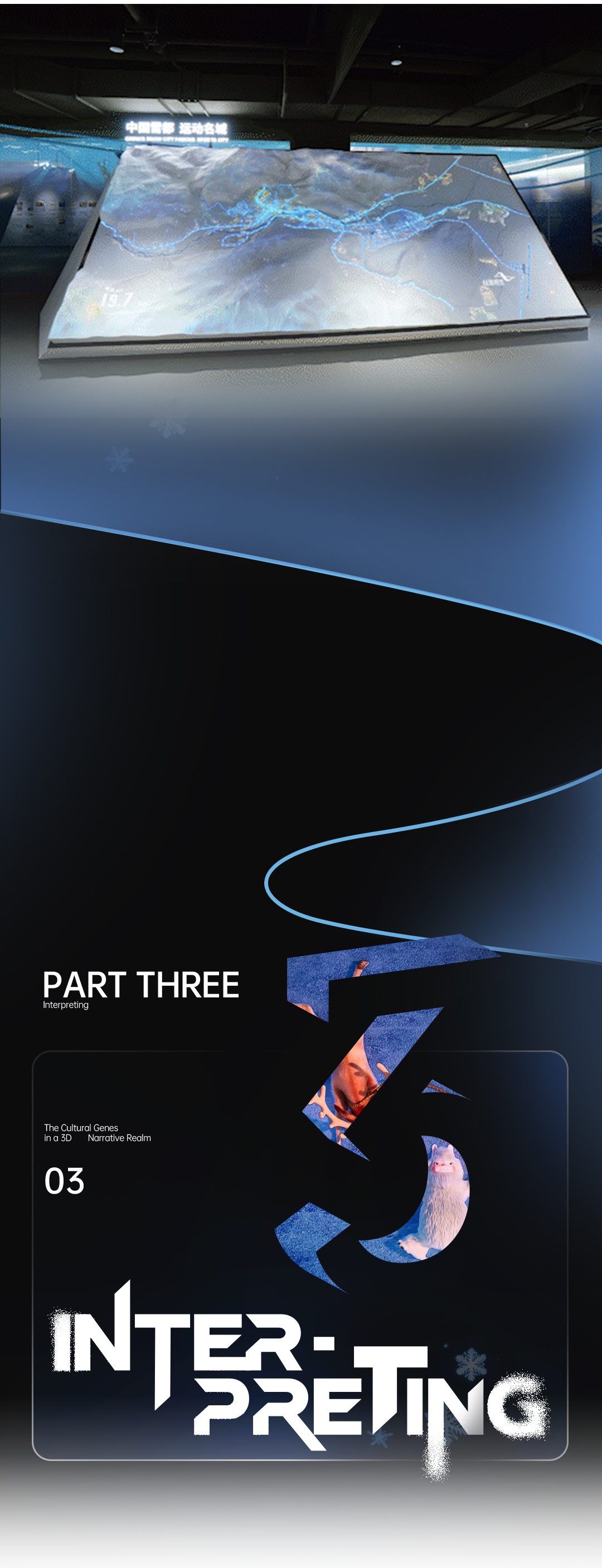
The Cultural Genes
in a 3D Narrative Realm
A special immersive theater plays the immersive microfilm "Forever Skiers."
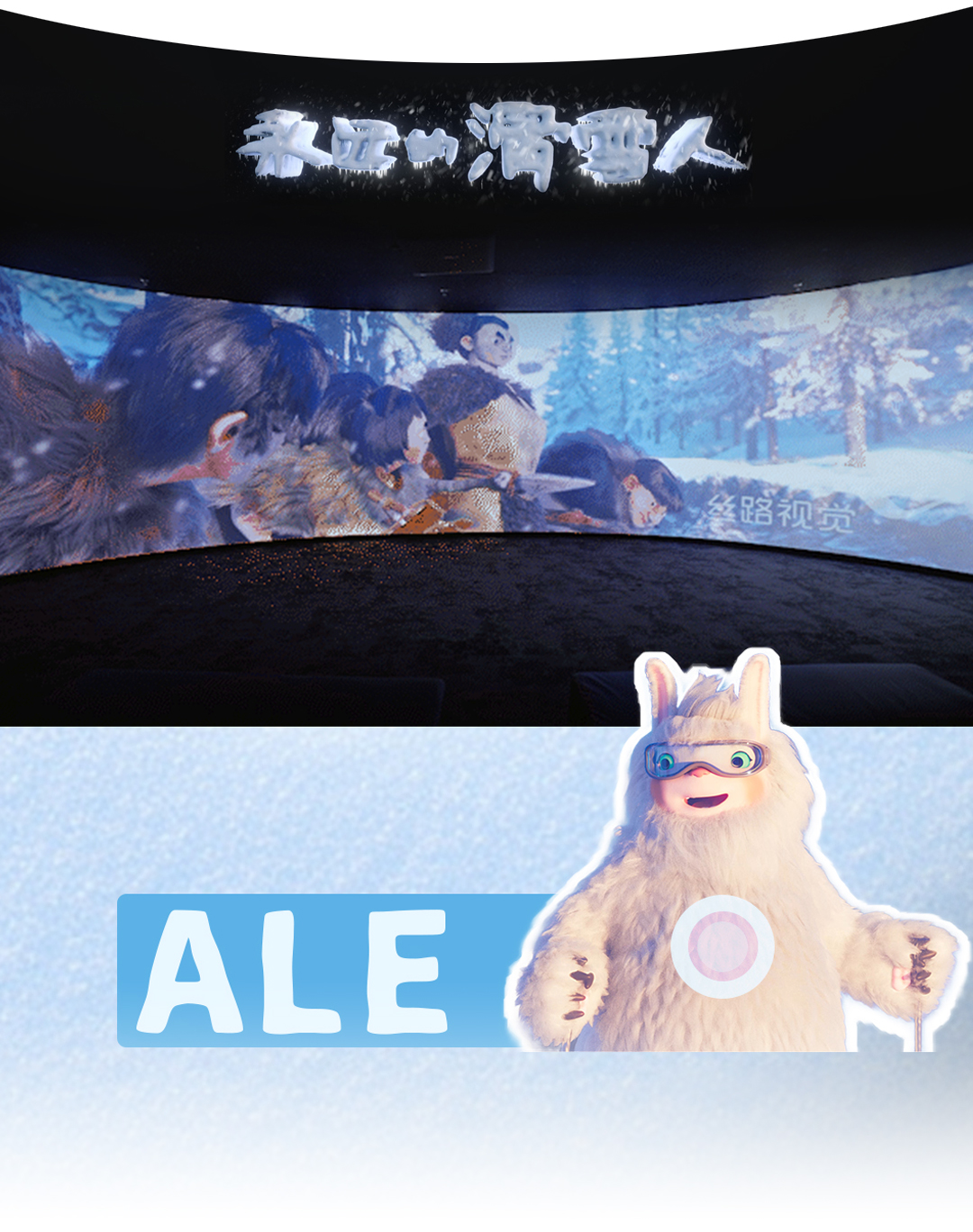
The film uses Altay’s first snow and ice IP character, "A Le," as the narrative carrier, combining 3D animation and special effects to tell the story of A Le’s growth as a snow monster.

"Forever Skiers" employs a dual narrative structure: the main line focuses on A Le’s growth from clumsy attempts at skiing to proficient leaps, while the secondary line traces the revolutionary tools from bark, fur, to carbon fiber skis, smoothly connecting rock art archaeology, folk crafts, and winter sports.
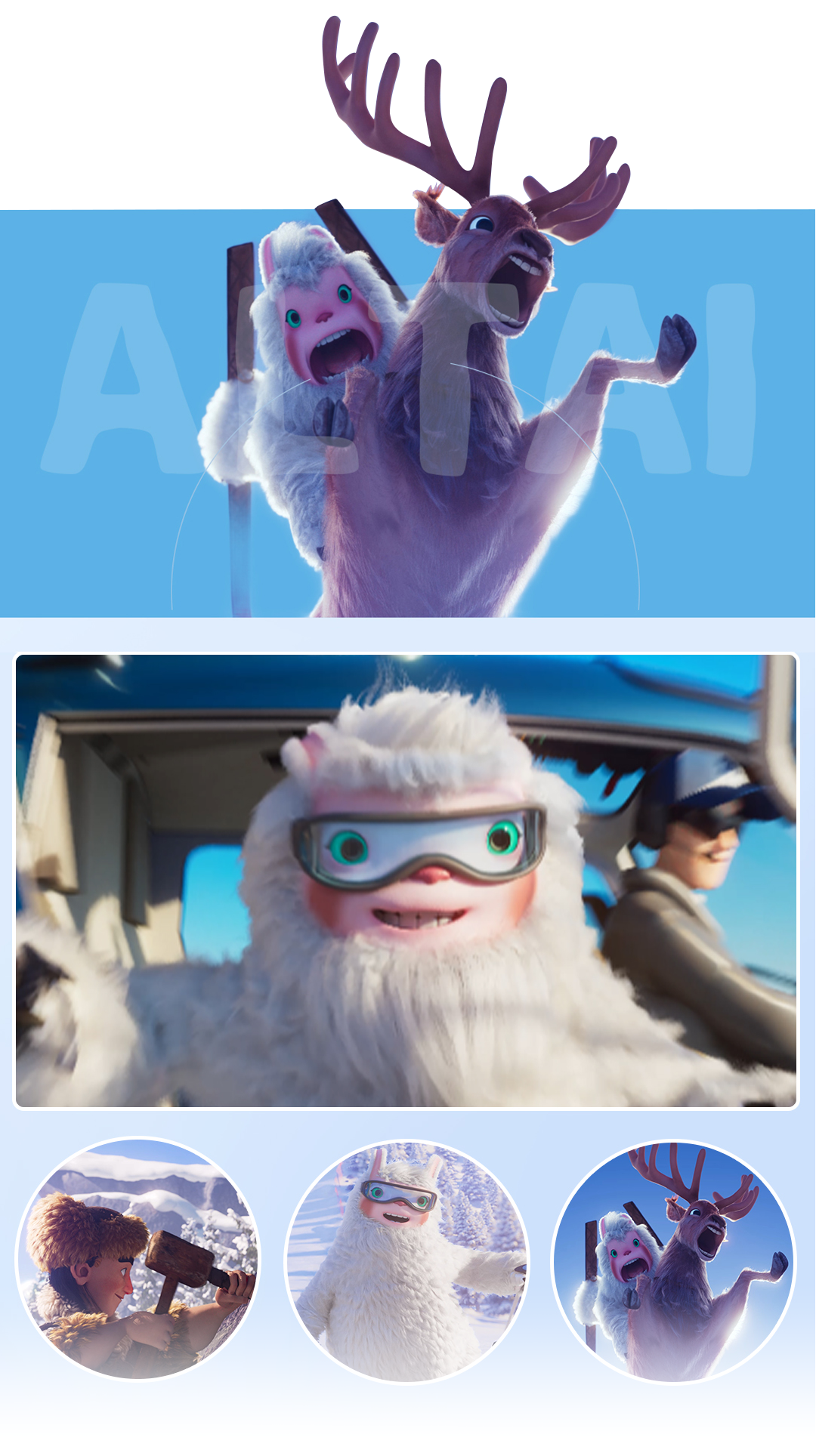
The film not only affirms Altay’s cultural status as the "origin of human skiing" but also uses metaphoric imagery of ice lakes dancing and cliffs soaring to symbolize the millennium-old inheritance of courage and exploration spirit. It ultimately transitions to modern ski resorts, showcasing international athletes competing, highlighting the integration of snow and ice economy with the global stage.

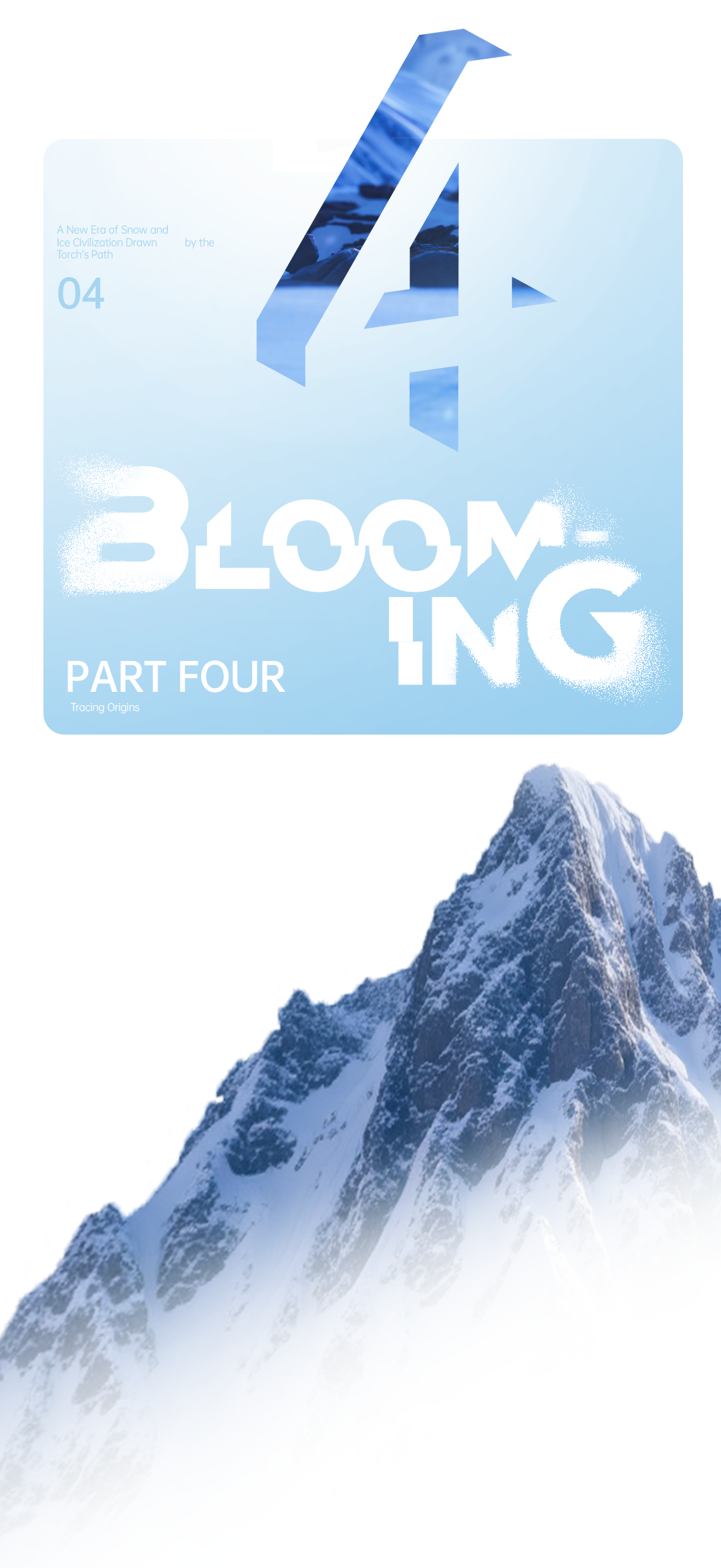
The third floor displays Altay’s historical connection with the Olympics and reviews of past Winter Olympic Games. The exhibition recreates the scene of the 2022 Beijing Winter Olympics opening ceremony, allowing visitors to become torchbearers and engage in an interactive experience that bridges ancient fur skiing wisdom with modern athletic spirit.
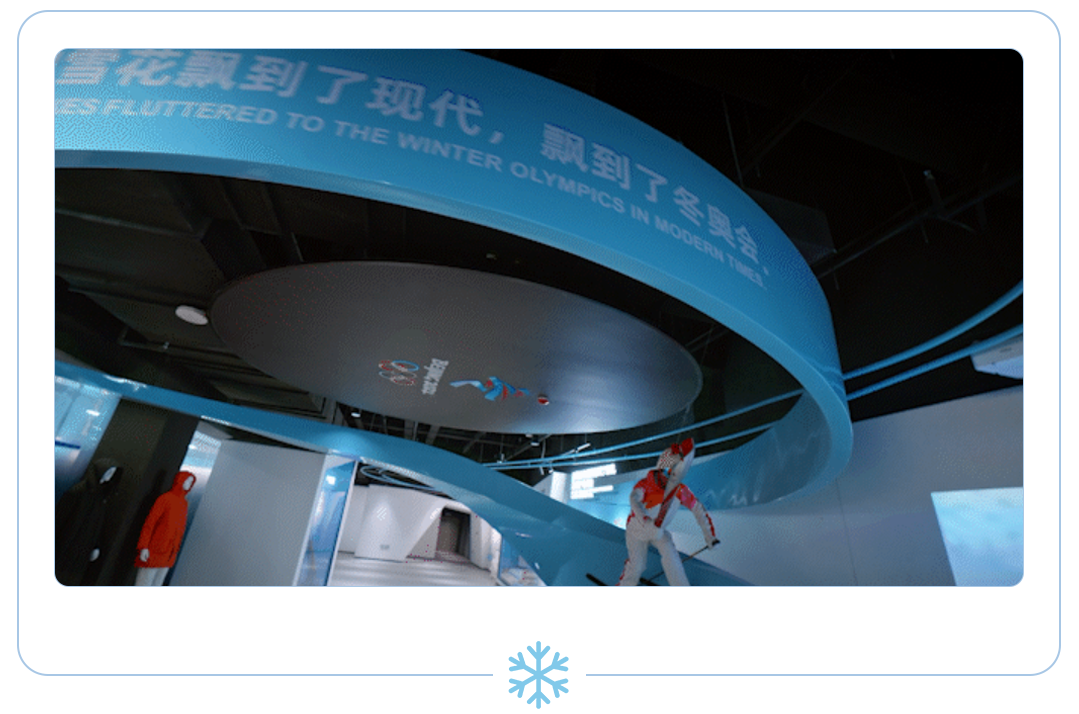
As an important hub for research on human skiing civilization, the Altay Museum Of The Origin Of Human Skiing aims to build a global platform for dialogue in ski culture. It underscores Altay’s strategic ambitions to develop a snow and ice economy and promote the Olympic bid, while also embodying the mission of this snowy sacred land to pass on and innovate the world’s skiing civilization.
